From Power Plant to Civic Renewal Centerpiece
ACSF, Moniz Team Up for “Future of Natural Gas”
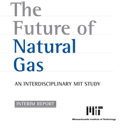
The Future of Natural Gas: An Interdisciplinary MIT Study

ACSF and several other groups initiated and sponsored the report. The other groups included the MIT Energy Initiative (MITEI) members Hess Corporation and Agencia Naçional de Hidrocarburos (Colombia), the Gas Technology Institute (GTI), Exelon, and an anonymous donor. Gregory C. Staple, the Foundation’s CEO, served on the report’s 18-person advisory committee. Incoming Energy Secretary Ernest J. Moniz, former MITEI director, testified before the U.S. Senate Committee on Energy and Natural Resources about this report.
Full Report
Download PDF • Request Print Copy
In the Press
Ernest Moniz, MIT Physicist, Nominated as Energy Secretary: The Washington Post, March 4, 2013
An M.I.T. Plan for Natural Gas with Planet in Mind: New York Times, June 9, 2011
MIT: Natural Gas to Become More Entwined in US Economy: SNL Financial, June 9, 2011
Natural Gas Gives Edge to US Manufacturers: Financial Times, June 8, 2011
The Future of Natural Gas: Geology.com, June 28, 2010
Does Our Energy Future Line in Natural Gas?: Consumer Affairs, June 28, 2010
The Future of Natural Gas: RedOrbit, June 28, 2010
Offshore Drilling Uncertainty Likely to Boost Search for Onshore Deposits: allvoices, June 28, 2010
Study Says Natural Gas Use Likely to Double: New York Times, June 25, 2010
MIT Study Urges US Gas Industry to Back Price on Carbon Emissions: Platts, June 25, 2010
For Climate Relief, US Will Turn to Gas: Nature.com, June 25, 2010
MIT Researchers See Natural Gas as the Choice for Lower Carbon Emissions: New York Times, June 25, 2010
MIT: The Future Is A (Natural) Gas: Forbes, June 25, 2010
Natural Gas Seen as Key in a Carbon-Constrained Futuree: Greentech Media, June 25, 2010
MIT Releases Major Report: The Future of Natural Gas: PhysOrg.com, June 25, 2010
MITEI-Led Study Offers Comprehensive Look at The Future of Natural Gas: MIT News, June 25, 2010
Natural Gas Use to Double in US in Coming Decades: MIT Report: Treehugger, June 25, 2010
Energy 101: Microgrids
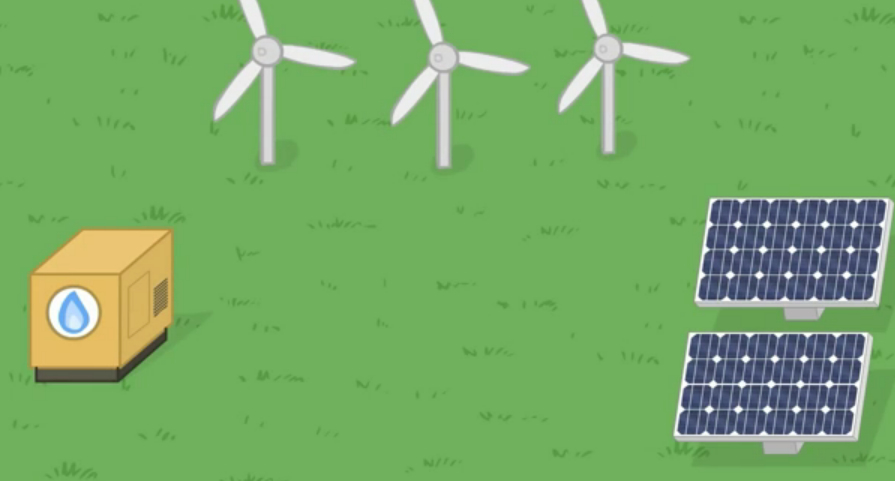
In this episode of Energy 101, Lee Patrick Sullivan takes us behind a truly innovative concept of localized power generation — the microgrid.
Clean Energy Regulatory Forum IV
ACSF has established a biannual workshop for industry professionals and environmental advocates to develop new regulatory options for promoting a cleaner, low carbon electricity sector. The 4th workshop in this series was held on November 8-9, 2012, near the headquarters of the PJM Interconnection in Valley Forge, Pennsylvania.
Presentations
M. Gary Helm, PJM Interconnection, Coal Plant Retirements: Potential Impacts of Reduced Energy Demand, Low Natural Gas Prices and the Mercury & Air Toxics Standards Rule
Susan Covino, PJM Interconnection, Resource Adequacy Planning
Paul McGlynn, PJM Interconnection, PJM’s Compliance With FERC Order 1000
Allison Clements, The Sustainable FERC Project, Natural Resources Defense Council, FERC Priorities
Michael Goggin, American Wind Energy Association, Wind Integration and FERC
Ken Schuyler, PJM Interconnection, Paying for System Flexibility: Status of New Ancillary Services
Shucheng Liu, California ISO, System Flexibility for Integrating 33% Renewable Generation in California ISO
Nivad Navid, Midwest ISO, Managing Flexibility in MISO Markets
James T. Gallagher, New York ISO, Integrating Renewable and Variable Energy Resources in the New York Electricity Market
Jonathan Lowell, ISO New England, Paying for System Flexibility
Paul McGlynn, PJM Interconnection, Incorporating State Energy Policy Goals into Regional Electricity Market
Synopsis of Workshop Agenda
November 8, 2012:
1:00 – 2:00pm – Tour of PJM Facilities
2:15 – 5:00pm – Presentations from PJM Staff
- Coal Retirements – Gary Helm
- Resource Adequacy Planning – Susan Covino
- FERC Order 1000 – Paul McGlynn
6:00pm – Welcome Reception and Dinner
November 9, 2012:
8:30am – Welcome and Opening Remarks – Greg Staple, American Clean Skies Foundation
8:45am – Review of FERC Variable Energy Resources (VER) Rules and Update on FERC Proceedings. Panelists include:
- Glen Boshart, Industry Editor/Analyst, SNL Energy (moderator)
- Allison Clements, Director, The Sustainable FERC Project, NRDC
- Michael Goggin, Manager of Transmission Policy, American Wind Energy Association
10:15am – Networking break
10:30am – Paying for System Flexibility: Status of New Ancillary Services to Accommodate Intermittent Resources. Panelists include:
- Rich Sedano, Principal and Director of US Programs, Regulatory Assistance Project (moderator)
- Ken Schuyler, Manager, Renewable Services, PJM
- Shucheng Liu, Principal, Market Development, CAISO
- Nivad Navid, Market Development and Analysis, MISO
- James Gallagher, Senior Manager for Strategic and Business Planning, NYISO
- Jonathan Lowell, Principal Analyst, ISO-NE
12:30pm – Lunch
1:15pm – Incorporating State Energy Policy Goals Into Regional Electricity Markets. Panelists include:
- Greg Staple, CEO, American Clean Skies Foundation (moderator)
- Paul McGlynn, Director, System Planning, PJM
- Malcolm Woolf, Vice President, Government and Regulatory Affairs, Advanced Energy Economy (AEE), and former Director, Maryland Energy Administration
- Robert Powelson, Chairman, Pennsylvania Public Utility Commission
3:30pm – Networking break
3:45pm – Group discussion about potential federal, state, and ISO mechanisms and policies for improving system flexibility.
5:00pm – Adjourn
Microgrid
[sharethis]
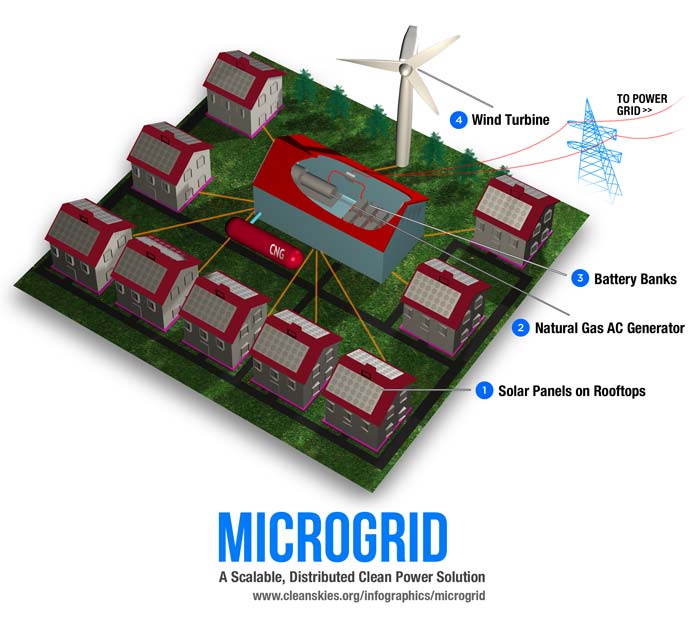
This infographic shows how a neighborhood could create a microgrid for its own power by installing solar panels on roofs, small wind turbines, and natural gas generators. If excess electricity is produced, the microgrid can send it to the larger grid, or it can store electricity in batteries for use when the wind is not blowing or the sun is not shining. Power can be drawn from the grid as well.
If an outage occurs on the main grid, the microgrid can island itself off and power the houses, military installations or college dorms by using their own generation resources and battery power stored in a central station.
Energy 101: Wind Energy

Whether on land or sea, wind turbines harness the kinetic energy of moving air. This new Energy 101 explains how that wind energy creates electricity.
The Electric Power Sector: New Federal Strategies for Cleaner Energy
 “Regulations are prompting the use of cleaner, more efficient power plants, and current electric transmission planning will shape the grid that connects those plants for years to come.”
“Regulations are prompting the use of cleaner, more efficient power plants, and current electric transmission planning will shape the grid that connects those plants for years to come.”Since 2010, ACSF has docketed comments in various federal regulatory proceedings to help facilitate the use of reliable, clean power (See Better Rules to Live By, p. 9). This article highlights the role of the Federal Energy Regulatory Commission (FERC) and two sets of regulatory dockets that may shape the grid for years to come: 1) federal environmental rules and 2) interstate electric transmission planning.
Environmental Regulation and the Electric Power Sector
The electric power sector is undergoing significant change. Environmental regulations are prompting the use of cleaner, more efficient power plants. And domestic natural gas production has dramatically increased, providing an abundant, affordable, low-emitting fuel source for power plants. Intermittent renewable energy also is being increasingly deployed.
Over the last year, the U.S. Environmental Protection Agency has finalized two significant power sector rules: the Cross-State Air Pollution Rule and the Mercury and Air Toxics Standards (MATS). The first seeks to reduce power plant pollution that drifts across state lines and impedes the ability of downwind states to meet federal air quality standards. The second addresses toxic emissions of mercury and other “hazardous air pollutants.” Both of these rules have been decades in the making.
Due to the power sector’s significant emissions and relatively costly pollution control equipment, EPA power sector rules are frequently subject to litigation. The Cross-State rule and MATS are both being challenged in the DC Circuit Court of Appeals. Regardless of how the Court rules, however, at least some of the emission control measures required by these rules are likely to be upheld under the Clean Air Act. Additional EPA regulations, including for coal ash and wastewater, will likely further impact coal-fired power. Bottom line: The electric power sector is becoming increasingly clean, as many older, high-emitting coal plants either retrofit with advanced emission controls or retire.
FERC’s Role in Processing Environmental Compliance Extensions
Some power companies and regulators have raised concerns that coal plant retirements brought about by the Cross- State rule and MATS may leave the grid with insufficient power. In particular, the stringent MATS generally require compliance by 2015. However, EPA can extend the MATS compliance deadline for power plant operators on a case-by-case basis.
On January 20, FERC issued a staff white paper for public comment describing how the agency might advise EPA on extension requests under the MATS that involve closing power plants and the subsequent affect on reliability standards. In response, ACSF filed comments urging a common sense solution: power plant operators should undertake early and transparent planning for plant retirements that meaningfully involves state regulators and other stakeholders. The ACSF comments identified how FERC could act through its statutory authority over electric system reliability to undertake a more proactive approach to reliability issues. The comments identified the importance of FERC working with state regulators and other stakeholders. In a subsequent policy statement, FERC signaled its intention to continue addressing potential reliability issues and to work with states via the National Association of Regulatory Utility Commissioners/ FERC Forum on Reliability and the Environment. FERC also stated that it will continue to review relevant information submitted by other stakeholders.
In its FERC comments, ACSF alsostressed that a large number of existing gas-fired power plants are underutilized. As older coal plants retire, these underutilized gas power plants provide an obvious means of helping to provide replacement power and promote grid reliability.
Transmission Planning
FERC has also been active with respect to transmission planning and related issues. Notably FERC Order 1000 (issued on July 21, 2011) requires authorities to plan for new facilities both within a region and between regions.
ACSF has been providing input on related issues, including two studies by the Department of Energy on transmission congestion in both 2010 and 2012.
ACSF advised DOE that, given “the low emissions profile and relatively small footprint of natural gas electric generating units, these units are uniquely well-suited for siting closer to sources of electricity demand;” they, therefore, can reduce transmission congestion. Similarly, natural gas located closer to load centers can reduce the need for, costs, and environmental impacts associated with long-distance transmission.
Order 1000 and Public Policy Requirements
Order 1000 also requires transmission needs to be guided by “public policy requirements,” such as the Cross-State rule and MATS. Both renewables and low-emitting gas-fired plants can help achieve the goal of reducing power sector emissions. In particular, natural gas emits no mercury and either little or none of other major pollutants emitted by coal-fired power plants (see Clean Skies Infographic).
Furthermore, natural gas plants can be more flexible than coal-fired power plants, and can ramp generation up and down to provide support to intermittent renewable generation when the wind isn’t blowing and the sun isn’t shining. In doing so, natural gas-fired power helps states to meet their Renewable Portfolio Standards–also “public policy requirements” under order 1000.
In its FERC comments ACSF has also argued that consideration should be given to how capacity markets and compensation for ancillary services can promote the type of flexible gasfired generation.
For background on the multiple fuel sources used by power plants, view Energy 101: Electricity Generation.
On April 13, the U.S. Environmental Protection Agency proposed a significant standard to limit greenhouse gas (GHG) emissions from new fossil-fuel fired electric power plants. Power plants are the largest anthropogenic source of GHG emissions in the United States, and coal-fired power plants have particularly high levels of these emissions.
This proposed rule builds on EPA’s proposed regulation of GHG emissions from vehicles, the second largest source of these emissions.
The proposed power plant GHG rule is due to usher in a new era of direct carbon limits for new power plants.
Significantly, the proposed rule bases the GHG emission limit “on the performance of widely used natural gas combined cycle” technology. Thus, natural gas units will literally “set the standard” for fossil fuel units more broadly. To control their inherently higher GHG emissions, new coal-fired power plants would generally have to install carbon capture and storage equipment.
In proposing these power plant GHG standards, EPA recognizes natural gas as a foundation of our nation’s clean energy future. Here are some of EPA’s comments on natural gas in the proposed rulemaking docket:
- “EPA’s proposed standard reflects the ongoing trend in the power sector to build cleaner plants, including new, clean-burning, efficient natural gas generation, which is already the technology of choice for new and planned power plants.”
- “Natural gas prices have stabilized over the past few years as new drilling techniques have brought additional supply to the marketplace. As a result, natural gas prices are expected to be competitive for the foreseeable future and utilities are likely to rely heavily on natural gas to meet new demand for electricity generation.”
- “Because this standard is in line with current industry investment patterns, this proposed standard is not expected to have notable costs and is not projected to impact electricity prices or reliability.” In short, EPA emphasizes that lowcost, efficient natural gas units can provide an effective means to address GHG emissions.
Of course, low-emitting power sources, such as renewable energy, also have a key role in reducing power sector emissions. But natural gas generation, which can operate more flexibly than other generation types, also has been broadly recognized as needed to provide load-support to variable intermittent renewal energy sources.
The EPA rulemaking notice excerpted on this page can be found at: http://epa.gov/carbonpollutionstandard/actions.html.
Better Rules to Live By: ACSF Comments on Regulatory Proposals
ACSF frequently comments on regulatory proposals that impact the electric power sector, including proposals by the Federal Energy Regulatory Commission (FERC), the Department of Energy (DOE), and the Environmental Protection Agency (EPA). Our comments include:
FERC
- On February 29, 2012, ACSF commented on a staff white paper regarding FERC’s role in processing requests to extend deadlines for compliance with EPA’s stricter limits on mercury and other harmful air emissions, known as the Mercury and Air Toxics Standards (MATS). ACSF suggested adjustments to avoid unnecessary power plant reliability problems and ensure early and transparent planning that meaningfully involves state regulators and stakeholders. http://www.cleanskies.org/wp-content/uploads/2012/04/ACSFComments-FERCWhitePaper_on_MATS.pdf
- On March 2, 2011, ACSF commented on a Notice of Proposed Rulemaking on the Integration of Variable Energy Resources. ACSF’s response focused on fairly allocating costs for ancillary grid support services (such as load balancing provided by flexible fast-start natural gas fired generators) needed to accommodate more renewable energy. http://www.cleanskies.org/wp-content/uploads/2011/05/ACSF_FERC_filing_3_2_2011.pdf
EPA
- On August 4, 2011, ACSF supported EPA’s proposed MATS rule. The Foundation also urged the EPA to document how the increased use of natural gas could reduce the power sector’s emissions of mercury and other harmful pollutants covered by this rule. http://www.cleanskies.org/wp-content/uploads/2011/08/EPA-8_4_2011-filing-re-MACT.pdf
- On October 1, 2010 ACSF filed comments on EPA’s Cross-State Air Pollution Rule, in particular noting that EPA’s proposed emission-based allocation method unduly favored high-polluting units. EPA recognized this critique and subsequently changed the allocation method. http://www.cleanskies.org/wp-content/uploads/2012/05/acsf_comments_CATR_10012010.pdf
DOE
- On January 30, 2012, ACSF filed comments on DOE’s forthcoming transmission congestion study and urged DOE to take into account future increases in gas-fired generation. ACSF noted that gas-fired units can be located close to load and, thus, can provide a key means of alleviating transmission constraints. http://1.usa.gov/MBDCqh
- On October 29, 2010, ACSF supported DOE’s adoption of full fuel-cycle measures for benchmarking the energy efficiency of consumer appliances and urged more widespread use of fuel-cycle principles. Taking into account the full fuel cycle helps to provide the public more complete information on greenhouse gas footprints. http://cleanskies.org/pdf/ACSF_Comments_on_Full_Fuel_Cycle_filing_10
ACSF’s complete comments can be found here.
Keeping the Lights on for a Year
[sharethis]
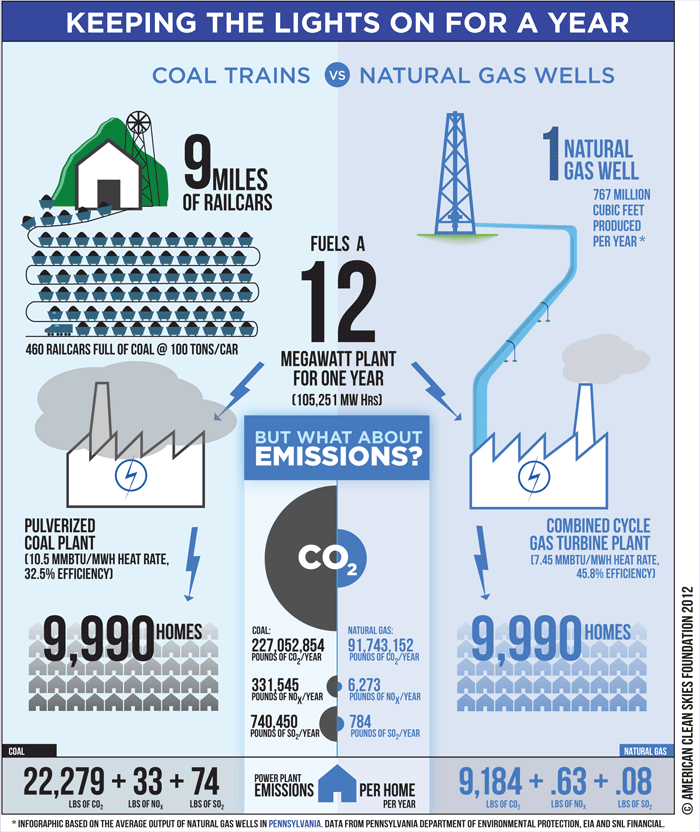
Energy 101: Natural Gas Power Plants

In this episode of Energy 101 host Lacey Lett explains how combined cycle natural gas-fired power plants work.
Clean Energy Regulatory Forum III
ACSF has established a biannual workshop for industry professionals and environmental advocates to develop new regulatory options for promoting a cleaner, low carbon electricity sector. The 3rd workshop in this series, held on April 19-20, 2012, was co-hosted at the National Renewable Energy Laboratory in Golden, Colorado with the Joint Institute for Strategic Energy Analysis.
Presentations
Paul Denholm, National Renewable Energy Laboratory, How PV and CSP with Thermal Storage Can Work Together
Craig Turchi, National Renewable Energy Laboratory, CSP and Natural Gas Hybrids
Easan Drury, National Renewable Energy Laboratory, U.S. PV Market Landscape
Russell Young, GE Energy, Concentrated Solar Power
Cara Libby, Electric Power Research Institute, Utility Perspective: Solar Thermal Hybrid Projects
Greg Brinkman, National Renewable Energy Laboratory, Impacts of Renewable Generation on Fossil Fuel Unit Cycling: Costs and Emissions
Paul Hibbard, Analysis Group, Variable Resources in Capacity Markets, Market Rule Adjustments and Balancing Resource Options
Christopher Carr, C2E2 Strategies, EPA Power Plant Regulations and Clean Energy: A New Paradigm?
Ron Binz, Public Policy Consulting, Progress Under the Clean Air Clean Jobs Act
Austin Whitman, M.J. Bradley & Associates, Energy Sector Modeling and Fuel Price Assumptions
Patrick Bean, American Clean Skies Foundation, Locking In the Benefits to Fuel Switching
David Hart, Center for Science and Technology Policy at George Mason University, Unlocking Energy Innovation
Synopsis of Workshop Agenda
April 19th: Updates, new analysis and background presentations
8:00 – 8:30am – Workshop introduction – Greg Staple, Chief Executive Officer, American Clean Skies Foundation; and Doug Arent, Executive Director, Joint Institute for Strategic Energy Analysis
8:30 – 12:15pm – Moving Towards a Cleaner Power Paradigm
- Utility Scale Solar and Gas: Options for Thermal Solar and PV(120 minutes)
- Solar, Storage, and Natural Gas Hybrids: Paul Denholm, Craig Turchi, and Easan Drury, NREL
- Facilitated Discussion on Developer and Utility Perspectives: Udi Helman (BrightSource), Russell Young (GE Energy), Cara Libby (EPRI), and Mark Marion (juwi solar, Inc.)
- Impacts of Renewable Generation on Fossil Fuel Unit Cycling: Costs and Emissions (Greg Brinkman, NREL) (45 minutes)
- Variable Resources in Capacity Markets, Market Rule Adjustments and Balancing Resource Options (Paul Hibbard, Analysis Group) (45 minutes)
12:15 – 1:45pm – Lunch
- Survey of Ongoing Projects: Update from NREL/JISEA
- Renewable Energy Futures Study, Trieu Mai
- The Energy Systems Integration Facility (ESIF), Ben Kroposki
- Energy Data Visualization, Dan Getman
2:00 – 3:00pm – Coal Retirements and Action at the State Level
- EPA’s Clean Air Regulations: State of Litigation on CSAPR and MATS (Chris Carr, C2E2 Strategies)
- Implementing Colorado’s Clean Air-Clean Jobs Act: Reviewing Two Years of Progress (Ron Binz, former CO PUC Commissioner and Frank Prager, Xcel Energy)
3:15 – 5:00pm – Coal Retirements and Action at the State Level (cont.)
- Overview of Fuel Price Trajectories for Natural Gas and Coal
- Energy Sector Modeling and Fuel Price Assumptions (Austin Whitman, M.J. Bradley & Associates)
- ACSF Report: Locking in the Benefits of Fuel Switching (Patrick Bean, ACSF)
- Oklahoma’s New Competitive Procurement Process for Electric Utilities to Secure Long-Term Fuel Supply (Jim Roth, Phillips Murrah P.C.)
6:30 – 9:00pm – Reception and Dinner
Keynote – David Hart, co-author of ‘Unlocking Energy Innovation’
April 20th: Where do we go from here? Refining our Priorities and Next Steps
8:30 – 9:45am – Morning Panel – Clean Energy Policy Landscape in the West, Led by Gov. Bill Ritter, Center for the New Energy Economy, Colorado State University with Kate Fay, Energy Advisor, EPA Region 8; Maryanne Kurtinaitis, Colorado Renewable Energy Lead, Bureau of Land Management; Matt Baker, Commissioner, Colorado Public Utility Commission, and Bob Randall, Deputy Director, Colorado Department of Natural Resources.
10:00 – 12:00 – Synthesis and Next Steps
Energy 101: Electricity Generation

How many people does it take to turn on a lightbulb? Turns out that the answer is not as easy as we might think. From generating power to transmitting it over the power grid all the way to your home takes a lot of effort. In this animated introduction we take you deep into the heart of electricity generation.
From a Bridge to a Destination: Gas-Fired Power After 2020
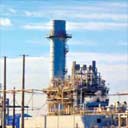
On March 12, ACSF issued a new, 227-page publication which brings together more than a dozen presentations made at the Foundation’s landmark November 4, 2011, public forum on Carbon Capture and Sequestration (CCS) for natural gas-fired electricity generation. CCS for gas-fired plants may be needed over the long term if there is widespread future regulation of greenhouse gas emissions. The ACSF forum brought together leaders from the Clean Energy Group of utilities, Great Plains Institute, President’s Interagency Task Force on CCS, California CCS Review Panel, MIT, Carnegie Mellon University, the Clean Air Task Force, EPA and other organizations to review the presentations. Hard copies are available on request; the report can also be downloaded here – (PDF, 36.5 MB).
Potomac River Green: A Concept for Redeveloping the Potomac River Generating Station Site in Alexandria, VA

Potomac River Green is an innovative $450 million plan to transform the waterfront site of a coal-fired power plant in Alexandria, VA into an environmentally friendly, mixed-use community. This redevelopment concept is designed to provide a catalyst for a market-based solution to the plant’s retirement. Potomac River Green features extraordinary river access and open space amenities; includes hundreds of new riverfront housing units; greatly improves community connectivity to the city’s Old Town community; and, at the heart of the site, creates a world-class new energy center for the Washington region.
Repurposing Legacy Power Plants: Lessons for the Future

This study showcases the potential for repurposing sites across the country now used by some of the oldest and least efficient power plants. Industry analysts predict that environmental and economic factors will lead to the retirement of dozens of aging coal-fired power plants in the coming decade. The report profiles eight existing power plant repurposing projects and identifies more than 20 different coal-fired power plants across the United States that are likely opportunities for redevelopment.
From a Bridge to a Destination: Gas Fired Power After 2020
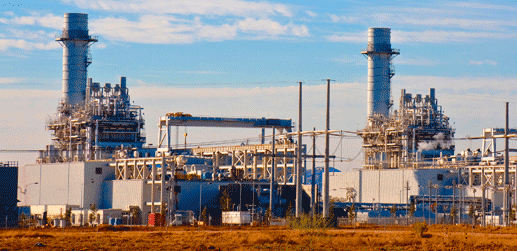
On March 12, ACSF issued a new, 227-page publication which brings together more than a dozen presentations made at the Foundation’s landmark November 4, 2011, public forum on Carbon Capture and Sequestration (CCS) for natural gas-fired electricity generation. CCS for gas-fired plants may be needed over the long term if there is widespread future regulation of greenhouse gas emissions. The ACSF forum brought together leaders from the Clean Energy Group of utilities, Great Plains Institute, President’s Interagency Task Force on CCS, California CCS Review Panel, MIT, Carnegie Mellon University, the Clean Air Task Force, EPA and other organizations to review the presentations. Hard copies are available on request; the report can also be downloaded here – (PDF, 36.5 MB).
Pre-conference documents, media and schedule are still available below.
A CARBON CAPTURE AND STORAGE LEADERSHIP FORUM FOR NATURAL GAS POWER PLANTS
While combined cycle gas turbine facilities emit roughly 60% less CO2 per kilowatt hour than conventional coal generators, over the long term controlling the CO2 footprint of gas-fired power via carbon capture and storage (CCS) will be essential for achieving our carbon reduction goals.
Today, however, U.S. RD&D efforts have concentrated almost exclusively on developing and deploying CCS for coal.
Click here to download our CCS Forum Flyer.
Click here to see ACSF’s background paper.
Agenda
- 8:30 am – 9:00 am
- Registration and Continental Breakfast
- 9:00 am – 9:15 am
- Introduction, Forum Overview: Greg Staple, CEO, American Clean Skies Foundation
- 9:15 am – 10:15 am
- Natural Gas and CCS: Framing the Issues (Video )
- Jerome Hinkle, VP Policy and Research, American Clean Skies Foundation; Download PDF
- Joel Swisher, CAMCO International; Consulting Professor of Civil and Environmental Engineering, Stanford University; (Presented by Jerome Hinkle) Download PDF
- Carl Bauer, Chair, California Carbon Capture and Storage Review Panel; former Director, National Energy Technology Laboratory; Download PDF
- 10:15 am – 10:30 am
- Break
- 10:30 am – 12:00 pm
- CS Technology and Economics for Natural Gas(Video )
- Robert Hilton, Alstom Power; Download PDF
- Howard Herzog, Senior Research Engineer, MIT Energy Initiative; Download PDF
- Edward Rubin, The Alumni Professor of Environmental Engineering and Science; Professor, Engineering and Public Policy and Mechanical Engineering, Carnegie Mellon University; Download PDF
- 12:10 pm – 1:00 pm
- Lunch
Keynote: Politics of RD&D Funding: Honorable Byron L. Dorgan, retired; Senator from North Dakota—Chairman, Energy and Water Appropriations Subcommittee; Chairman, Democratic Policy Committee, senior member, Energy and Natural Resources Committee; Chairman, Indian Affairs Committee; now Senior Fellow at the Bipartisan Policy Center, and Co-chair of the BPC Energy Project.
(Video ) - 1:00 pm – 2:30 pm
- Demonstrating CCS(Video )
- Brad Crabtree, Policy Director, Great Plains Institute; Download PDF
- Michael Holmes, PCOR Director, Energy and Environmental Research Center, University of North Dakota; Download PDF
- Mark Taylor, Lead Analyst, CCS & Geothermal, Bloomberg New Energy Finance
- George Peridas, Scientist, Climate Center, Natural Resources Defense Council; Download PDF
- 2:30 pm – 2:45 pm
- Break
- 2:45 pm – 4:15 pm
- Deploying CCS on Natural Gas: Policy and Regulatory Landscape(Video )
- Tom Curry, Vice President, M.J. Bradley & Associates LLC; Download PDF
- Dina Kruger, Principal, Kruger Environmental Strategies, former Director of the Climate Change Division, USEPA; President’s CCS Task Force; Download PDF
- Don Neal, Vice President Environment, Health, and Safety, Calpine Corporation; Download PDF
- 4:15 pm – 4:30 pm
- Closing Thoughts: Jerome Hinkle, VP Policy and Research, American Clean Skies Foundation
The Climate Impact Of Natural Gas and Coal-Fired Electricity: A Review of Fuel Chain Emissions Based on Updated EPA National Inventory Data
Full Report (PDF) | Full report (HTML, one page) | In the Press
This paper provides an updated, comparative fuel chain calculation of the greenhouse gas (GHG) emissions of natural gas- and coal-fired electricity. The analysis incorporates revised 2011 US EPA estimates of fugitive methane emissions from the upstream (i.e., production) portion of the fuel chain. Based on this revised EPA data and average generation heat rates, we find that existing gas-fired generation is still, on average, about 51% less GHG intensive than existing coal-fired generation. Similarly, a new gas-fired combined-cycle unit produces about 52% less GHG emissions per kWh than a new coal-fired steam unit; about 58% less than the average coal-fired unit; and about 63% less than a typical older coal-fired unit.
Key relevant concepts include:
- footprint/fuel chain
- fugitive emission
- efficiency
- GHG intensity
Read the report (Adobe PDF document).
In The Press
Cornell study on shale gas flawed?: UPI.com, April 20 2011.
Emissions All In, Gas Still Beats Coal, Says Report: NGI’s Shale Daily, April 22 2011.
Partnering with Renewables
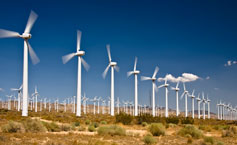
FOR MORE INFORMATION
NATURAL GAS: A NATURAL PARTNER WITH RENEWABLES
One of the biggest advantages of using natural gas to generate electricity is its ability to be paired with renewable sources of energy, such as wind and solar. Because generating power from the sun and wind is limited by weather conditions (when the sun is shining or wind is blowing), power generated from natural gas provides an essential complement to maintain a steady flow of power to end users.
(more…)
Natural Gas Basics
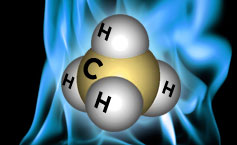
FOR MORE INFORMATION
What is natural gas? Natural gas is a naturally occurring fossil fuel that can be found in various underground rock formations worldwide, formed millions of years ago from the decaying remains of plants and animals. When it is extracted, natural gas is odorless, colorless and tasteless, and is composed mainly of methane.
Methane is clean burning and chemically simple. It has four hydrogen atoms and only one carbon atom, unlike most carbon-rich fuels such as coal, wood and oil. Natural gas is also the only fossil fuel that does not leave a residue when burned and, given its chemical composition, releases far less carbon dioxide compared to other fossil fuels.
(more…)
